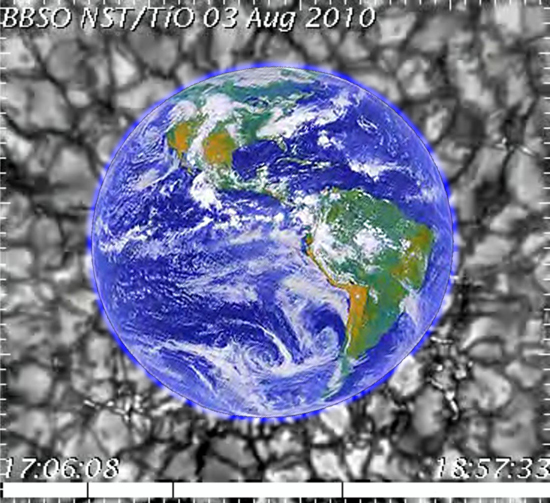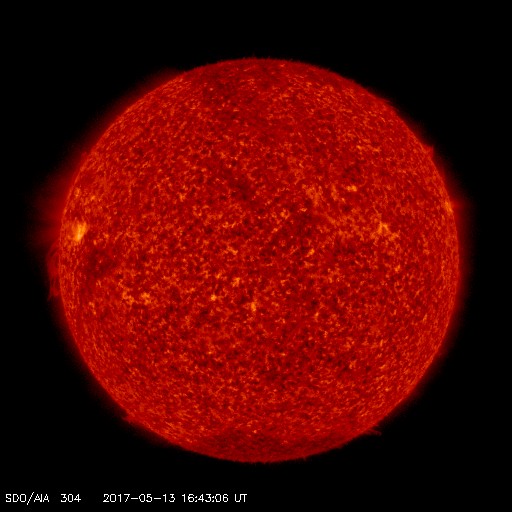It looks rather drab now, but the first photograph showing details of the Sun’s surface was a spectacular achievement when it was made — in 1845 — by French physicists Jean Foucault and Armand Fizeau.
Today, there are several satellites relaying images of the Sun from space, including NASA’s Solar Dynamics Observatory (SDO) which was launched February 11, 2010, and now streams high-def video of our closest star. (The SDO is the first mission of NASA’s Living With a Star program.)
Some of the most spectacular views of the Sun, however, still come from terrestrial observatories, like the Big Bear Solar Observatory (BBSO), 80 miles west of Los Angeles.
Built on the shore of Big Bear Lake (elevation, 6,750 feet) in the San Bernadino Mountains of California, BBSO houses the New Solar Telescope (NST), a 1.6-meter solar telescope — the largest of its kind in the world. The NST became operational in 2009 and is operated by the New Jersey Institute of Technology.
In the image above, captured last summer by the NST, we’ve highlighted a ubiquitous solar feature — granules. A granule is the top of a column made of hot matter (called plasma) streaming from within the Sun. As the plasma cools, it sinks into the dark lanes between the granules. Individual granules last only a few minutes, giving the Sun’s surface a churning or boiling appearance.
Without any familiar landmarks (or land, for that matter), it’s hard to grasp the size of these solar features. To help, we’ve taken an image of the Earth at the same scale and superimposed it over the picture of the Sun.
When the massive size of these granule is combined with how quickly they form and dissolve, another solar characteristic is evident. Plasma flows across the granule at supersonic speeds of up to 15,000 mph producing sonic booms and sending waves racing across the surface of the sun.
Here’s a video taken by the NST last August, showing the granules in motion.
[Thanks to the NJIT and the BBSO for granting permission to show this video on our site.]
Filed under: All,Media,Solar,Video
Trackback Uri











